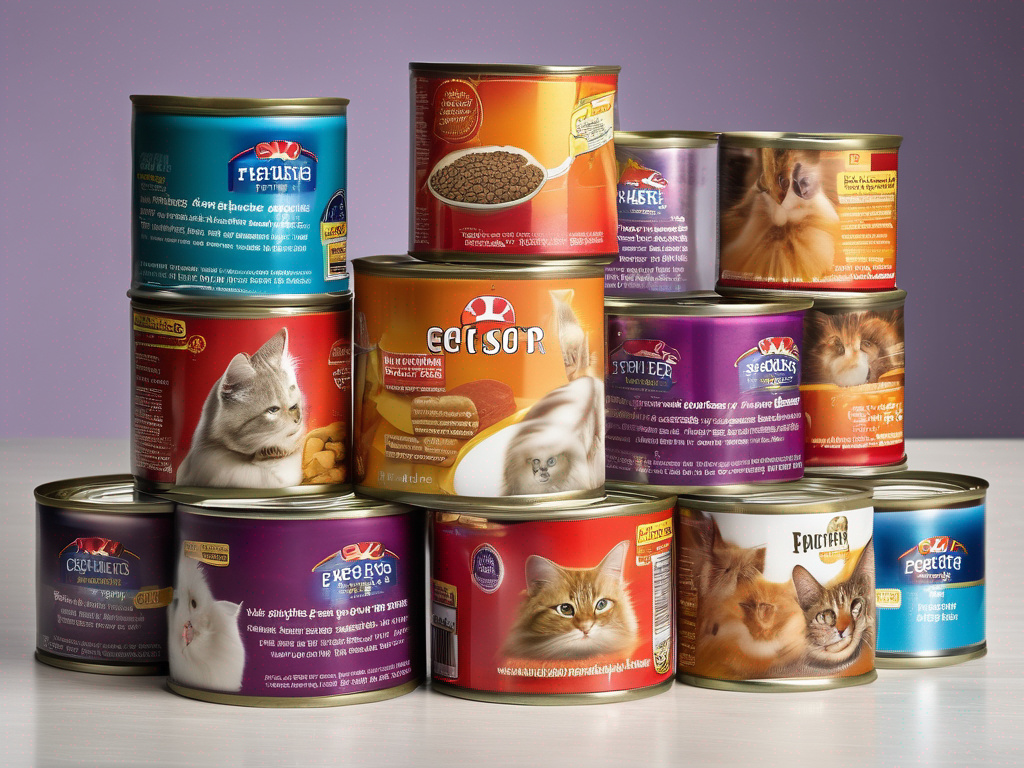
Can You Freeze Canned Cat Food for Long-Term Storage?
Get Your Free Food Safety Cheat Sheet
30 most common foods with instant answers. Print it and stick it on your fridge—completely free!
Can You Freeze Canned Cat Food for Long-Term Storage?
If you're a pet owner, you know the importance of providing your feline friend with high-quality nutrition. Canned cat food is a popular choice for many cat owners due to its moisture content and palatability. However, if you've stocked up on canned cat food and are wondering if you can freeze it for long-term storage, you're in the right place. In this comprehensive guide, we'll explore the ins and outs of freezing canned cat food to help you make informed decisions for your furry companion. (Canned cat food)
Understanding Canned Cat Food
Canned cat food is a convenient and nutritious option for cats of all ages. It typically contains a high moisture content, making it a great choice for cats who don't drink enough water. The ingredients in canned cat food are carefully formulated to meet the nutritional needs of felines, providing essential nutrients such as protein, vitamins, and minerals.
Benefits of Canned Cat Food
- High moisture content helps prevent dehydration
- Rich in protein for muscle health
- Balanced nutrition for overall well-being
- Palatable for picky eaters
- Convenient and easy to serve
Can You Freeze Canned Cat Food?
Freezing canned cat food can be a viable option for long-term storage, but there are some important considerations to keep in mind to ensure the safety and quality of the food.
Factors to Consider
-
Ingredients: Check the ingredients list on the canned cat food. Some ingredients may not freeze well and could affect the texture and taste of the food.
-
Packaging: The packaging of the canned cat food should be freezer-safe to prevent freezer burn and maintain the quality of the food.
-
Storage Duration: While freezing can extend the shelf life of canned cat food, it's essential to label the containers with the date of freezing and adhere to recommended storage durations.
-
Thawing Process: Proper thawing is crucial to maintain the integrity of the food. Thaw canned cat food in the refrigerator rather than at room temperature to prevent bacterial growth.
How to Freeze Canned Cat Food
Follow these steps to freeze canned cat food properly:
-
Check Expiry Date: Ensure that the canned cat food is within its expiry date before freezing.
-
Transfer to Freezer-Safe Containers: If the canned cat food is in a non-freezer-safe container, transfer it to airtight, freezer-safe containers to maintain freshness.
-
Label Containers: Clearly label the containers with the date of freezing to track storage duration.
-
Freeze: Place the containers of canned cat food in the freezer, ensuring they are stored away from strong-smelling foods to prevent odors from affecting the food.
Safety Tips for Freezing Canned Cat Food
- Thaw only the amount of canned cat food needed for each feeding to prevent wastage.
- Avoid refreezing thawed canned cat food to maintain its quality.
- Discard any canned cat food that has been left out at room temperature for more than 2 hours.
- Monitor your cat's response to frozen canned cat food to ensure it remains palatable.
Conclusion
In conclusion, freezing canned cat food can be a practical solution for long-term storage, provided that you follow proper storage guidelines and safety measures. By understanding the factors to consider, following the right freezing techniques, and implementing safety tips, you can ensure that your cat continues to enjoy nutritious meals even when stored in the freezer. Remember to prioritize your cat's health and well-being by making informed decisions about their diet and nutrition.
For a wide selection of high-quality [canned cat food](/food/canned cat food), visit our website to find the perfect options for your feline companion. (Canned cat food)
Authoritative Food Safety References
These agencies and university labs inform every tip and health precaution we publish.
USDA FoodKeeper – Cold Storage Guidelines
Official refrigerator, freezer, and pantry timelines maintained by the U.S. Department of Agriculture.
Visit USDA FoodKeeperFDA Produce Safety Rule & Grower Guidance
Field-to-fridge handling practices that prevent contamination of fruits, vegetables, and leafy greens.
Visit FDA Produce SafetyCDC Foodborne Illness Prevention Hub
Surveillance-backed guidance on pathogens, symptoms, and steps to reduce foodborne illness risk.
Visit CDC Food SafetyUC Davis Postharvest Technology Center
University research detailing optimal storage atmospheres for produce after harvest.
Visit UC Davis PostharvestPenn State Extension – Home Food Preservation & Safety
Peer-reviewed extension bulletins on safe canning, chilling, and reheating practices.
Visit Penn State ExtensionGet Your Free Food Safety Cheat Sheet
30 most common foods with instant answers. Print it and stick it on your fridge—completely free! Want more? Upgrade to the complete guide with 70+ foods.
Scan your food directly and get instant safety info using our AI-powered camera feature.